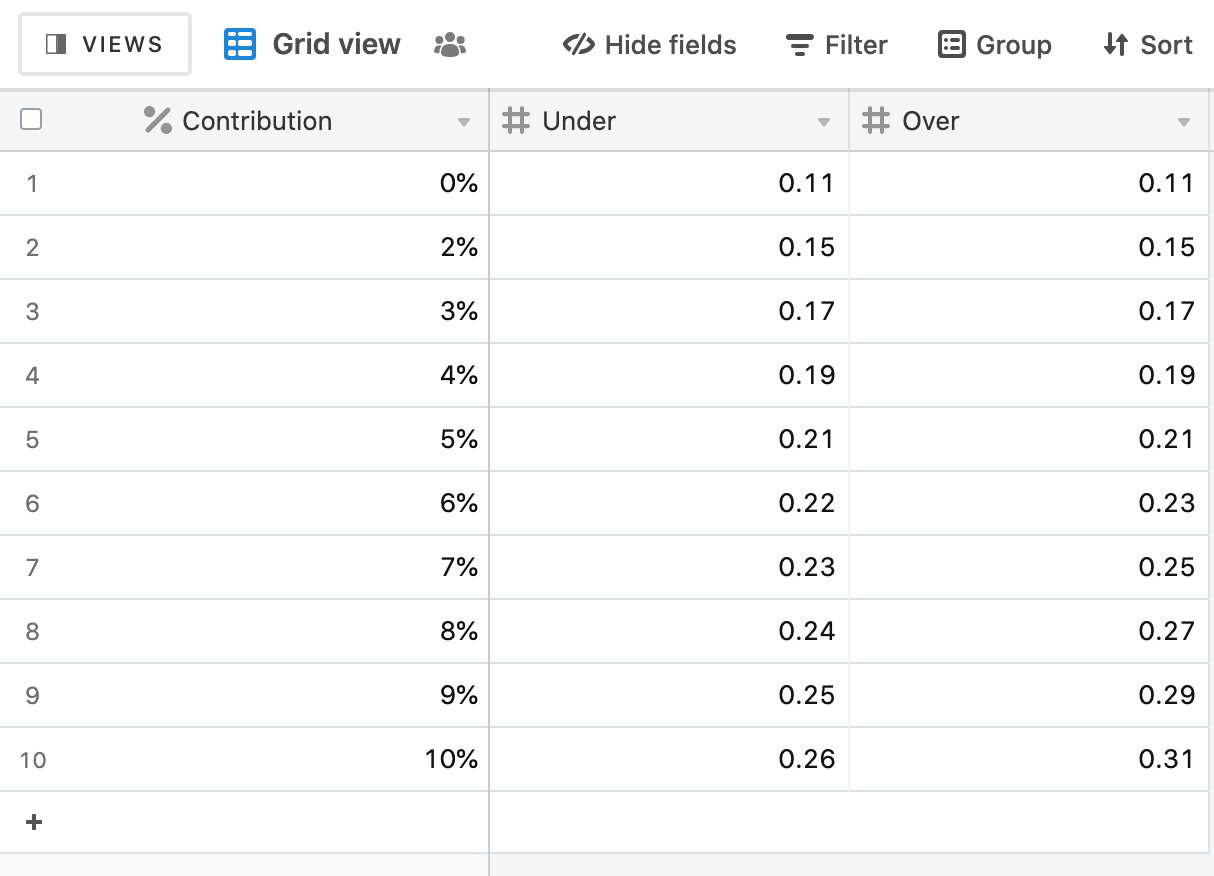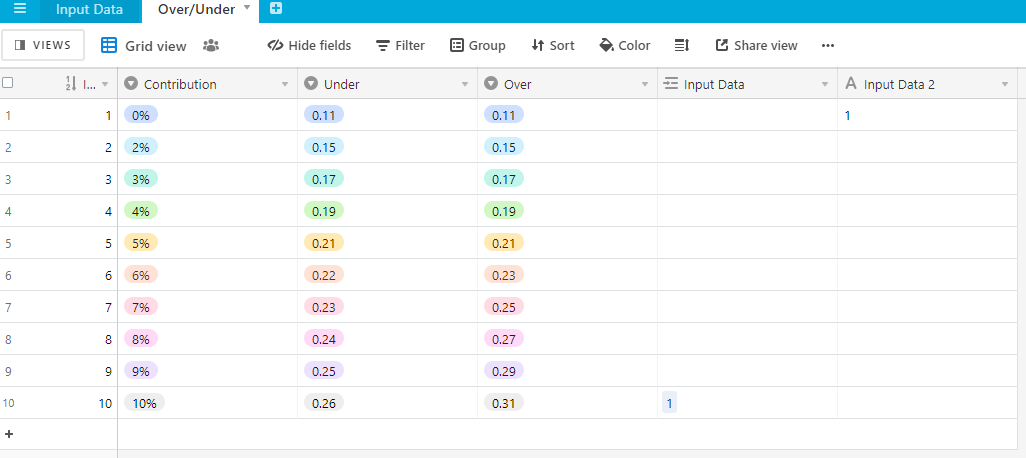In Table B there are 3 columns. C-A (%Contributions) has a percentage value (1 to 10), C-B (Over) has decimal numbers and C-C (Under) has decimal numbers. when a user selects a “%Contributions” value AND either “Over” OR “Under” option the result should be given. ie… if the user enters %10 and Over the result should be 0.31.

Thanks in advance
Regards
David



